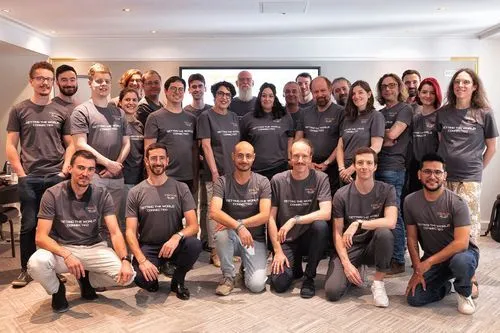"VDI vs RDP: A Practical Decision Framework (Costs, Risks & How To Supercharge RDS With or Without VDI)"
VDI vs RDP,: a practical decision making framework to examine costs, risks & requirements. Discover how to supercharge RDS with or without VDI.
Would you like to see the site in a different language?
RDS TOOLS BLOG
Explore the role of RDP software in Microsoft Remote Desktop Services (RDS).
)
RDP, or Remote Desktop Protocol, is used by many IT professionals. It allows them to remotely access and manage computers across networks. As an IT manager or MSP, you most likely want to understand the benefits and limitations of RDP. You can also benefit from knowing how it can be leveraged for effective IT management. In this article, we will explore the role of RDP software in Microsoft Remote Desktop Services (RDS), as well as the capabilities offered by RDS-Tools. We will also see the importance of our documentation in supporting effective use of these tools.
Microsoft Remote Desktop Services (RDS) is a popular solution for managing remote desktops and applications in enterprise environments. The platform allows IT managers to centralize desktop and application management and enables users to access their work environment from anywhere. At the core of Microsoft RDS is its RDP software. RDP allows remote users to connect to a server and access a virtual desktop or application.
One of the main benefits of RDP in Microsoft RDS is how it supports a large number of simultaneous connections. Historically though, security has been its prime weakness. Steps like encryption and extra authentication need to reinforce the protocol. Without these, RDP and therefore potentially RDS would be left open to threats.
RDS-Tools is a software provider specialising in remote desktop and application management solutions. Our RDP software suite provides advanced capabilities for IT managers, administrators and MSPs, including load balancing, session recording and device protection.
Load balancing is particularly useful for organizations with high volumes of remote connections. Indeed, it ensures that network resources are evenly distributed across multiple servers. RDS-Server Monitoring provides this feature.
Session recording is one of our choice capabilities for RDS-Remote Support. It enables IT managers to monitor remote sessions for security and compliance purposes. It can also be used for training and logging purposes.
Device protection is the remit of RDS-Advanced Security. It gives the option to pair endpoints with the credentials of the specific users connecting from them. This increases how secure a login can remain since the combination of correct credentials plus appropriate device adds a layer of difficulty against a potential breach of security.
One extra feature for today is RDS-Server Monitoring's latest feature: our team have recently opened it welcome Linux servers in a click. We hope this will make managing servers smoother for all IT professionals who have to juggle servers from different operating systems.
Effective use of RDS-Tools software is upheld by our thorough documentation. We have mapped its capabilities and described usage as pertinently as possible. This is particularly important for the IT managers, MSPs and administrators among you, who need to be able to face any given use-case daily. We provide precise instructions, whether to benefit you directly or indirectly. You might train team members or better serve clients. Either way, good knowledge of our tools will be useful. That way you may ensure all can use RDP in a way that supports network and data security.
The RDS-Tools documentation site provides product-specific steps and guidance. It is a comprehensive resource for IT professionals who need to understand the ins and outs of our software. It covers topics such as configuring RDP connections, securing remote access, and troubleshooting common issues. By using this documentation, IT managers and MSPs can ensure that their team members and clients are using RDP in a way that maximizes its benefits and minimizes its risks.
RDP software is a powerful tool for IT managers and MSPs, allowing them to remotely access and manage computers across networks. Microsoft RDS provides a scalable solution for remote desktop and application management. Meanwhile, RDS-Tools offers three ranges of complementary advanced features. These have been distributed into our products: RDS-Remote Support, RDS-Server Monitoring and RDS-Advanced Security.
Documentation of each RDS-Tools product is essential for their effective use. Therefore, our online documentation is a valuable resource for IT professionals. By leveraging RDP software effectively, IT administrators, IT managers and MSPs can improve network efficiency and productivity. All the while, they can keep on ensuring the security and compliance of their remote access solutions.
Simple, Robust and Affordable Remote Access Solutions for IT professionals.
The Ultimate Toolbox to better Serve your Microsoft RDS Clients.
 Get in touch
Get in touch
